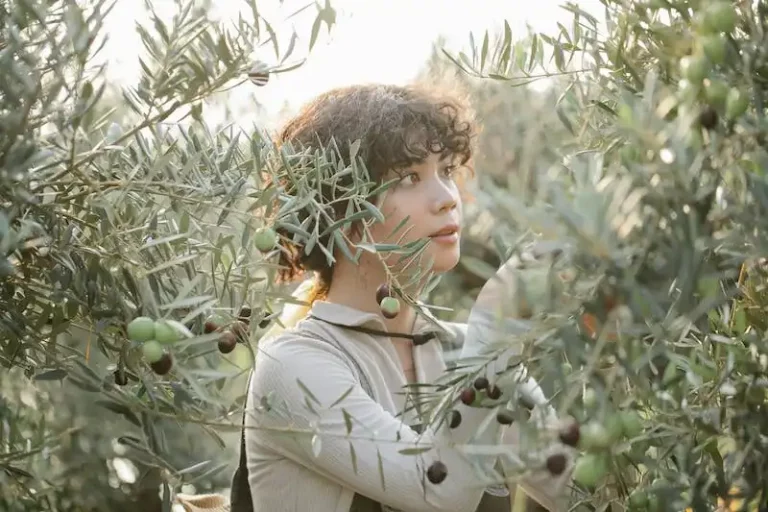The Split-Leaf Philodendron, scientifically known as Monstera deliciosa, is a popular houseplant that belongs to the genus Philodendron. It is also referred to as Swiss Cheese Plant, due to its unique and distinctive-looking leaves. Unlike Swiss cheese, though, this plant isn’t edible, but it sure looks delicious with its large, glossy, and green leaves that have natural holes and splits between their veins, hence the name “Split-Leaf Philodendron”.
Aureum is another name for Split-Leaf Philodendron, which signifies its golden appearance when the leaves grow in bright light. This houseplant is a quick grower, making it a favorite among gardeners who want to add a touch of lushness to their homes. The Split-Leaf Philodendron is tolerant of low light conditions, making it a perfect choice for any room in the house.
One of the unique features of the Split-Leaf Philodendron is its ability to attach itself to moss-covered surfaces. In its natural habitat, it grows as an epiphyte, similar to a banyan tree, attaching its aerial roots to the surface of other plants or trees. However, as a houseplant, it can grow without any support, but providing a moss-covered pole or trellis will allow it to develop its characteristic split leaves and maintain its health.
This plant is perfect for those who want a low-maintenance houseplant, as it can tolerate neglect and thrive year-round. The Split-Leaf Philodendron is a great option for beginners, as it doesn’t require frequent watering or attention. It is relatively drought-tolerant and only needs watering when the top few inches of soil are dry. In winter, the frequency of watering should be reduced to ensure the plant’s optimal health.
The Split-Leaf Philodendron is not the only variety of Philodendron that looks like Swiss cheese. Adansonii, also known as the Swiss Cheese Vine, has similar holey leaves but in a smaller size. This vine is a vigorous grower and can be grown in hanging baskets or trained to climb up a trellis. Both varieties of Philodendron are known for their air-purifying abilities, making them an excellent choice for improving indoor air quality.
In recent years, the Split-Leaf Philodendron and other varieties of Philodendrons have gained popularity as trendy decorative plants. Their unique leaf structure and glossy green appearance make them an eye-catching addition to any space. Whether you have a bright room or a low-light corner, a Split-Leaf Philodendron is sure to bring a touch of nature and elegance to your home.
Split-leaf philodendron Monstera deliciosa
The Split-leaf philodendron, scientifically known as Monstera deliciosa, is a popular houseplant among gardeners. It belongs to the genus Philodendron and is a member of the Araceae family. This plant is also referred to as Swiss cheese plant due to its unique leaf form, which develops deep splits and holes as it matures.
Split-leaf philodendrons are known for their vigorous growth and impressive size. They have large, glossy leaves that can reach up to 90 cm in length. The leaves are tough and thick and have a surface that resembles the texture of a hexagonal net. These leaves give the plant a unique and striking appearance, making it a favorite choice for both indoor and outdoor decoration.
Monstera deliciosa is a vine that can grow both vertically and horizontally. It has aerial roots that can sprawl out and cling onto surfaces, allowing it to grow as a climbing plant. However, it can also be trained to grow upwards by providing it with a support, such as a moss pole or a trellis.
When buying a Split-leaf philodendron, make sure to choose a healthy plant with no signs of disease or pests. It is important to provide these plants with the right conditions to thrive. They prefer bright indirect light, but can also tolerate partial shade. They should be kept in a warm environment with temperatures between 18-30°C and should be protected from cold drafts, especially during winters.
Split-leaf philodendrons require well-draining soil to avoid waterlogging. They need to be watered thoroughly and then allowed to dry out slightly before the next watering. Overwatering can lead to root rot, so it’s important to maintain a balance.
These plants are generally low-maintenance, but regular care is still necessary. Pruning can be done to remove any dead or damaged leaves, or to shape the plant as desired. Repotting should be considered when the roots start to outgrow their current container. This can be done every 2-3 years. Additionally, applying a balanced fertilizer once a month during the growing season can help promote healthy growth.
Monstera deliciosa is not the only species in the genus with split leaves. Other popular plants include Monstera adansonii, also known as the Swiss cheese vine, and Monstera xanadu, which has a bushier growth habit. These plants have similar care requirements and can be a great addition to any houseplant collection.
The Split-leaf philodendron Monstera deliciosa is a stunning plant that can bring a touch of the tropical into any space. Its large, unique leaves and low-maintenance care make it a popular choice for both beginner and experienced gardeners.
Split-Leaf Philodendron
The Split-Leaf Philodendron, also known by its scientific name Monstera deliciosa, is a popular houseplant that is native to the rainforests of Central and South America. It belongs to the genus Philodendrons, which is part of the Araceae family. The plant gets its name from its large, heart-shaped leaves that are deeply divided, giving it a unique split-leaf appearance.
The Split-Leaf Philodendron is relatively easy to care for and can tolerate a range of conditions. It prefers bright, indirect light and can tolerate some shade. It can be grown in a variety of soil types, but a well-draining, sterile potting mix is recommended. Waterings should be done when the top inch of soil feels dry to the touch.
Although the Split-Leaf Philodendron grows naturally as an epiphyte, attaching its roots to the surface of other plants, it can also be successfully grown in pots. It is a vine with thick, aerial roots that can be used to attach itself to supports such as moss poles or trellises. Pruning is necessary to keep the plant in a desirable form and to prevent it from becoming too large. Trim back long stems to encourage bushier growth.
The Split-Leaf Philodendron is a fast-growing plant and can reach a height of up to six feet. It is a relatively low-maintenance plant, although it may require more attention during the growing season. Fertilize the plant every two to four weeks during the spring and summer with a balanced liquid fertilizer diluted to half strength. In winter, reduce watering and stop fertilizing to allow the plant to rest.
| Scientific Name | Common Names | Lighting | Watering | Growth |
|---|---|---|---|---|
| Monstera deliciosa | Split-Leaf Philodendron, Swiss Cheese Plant | Bright, indirect light | Allow top inch of soil to dry between waterings | Fast-growing, can reach up to six feet |
The Split-Leaf Philodendron is often mistaken for other plants, such as the Pothos and the Epipremnum aureum, due to their similar-looking leaves. However, the Split-Leaf Philodendron has distinctively split leaves, while the Pothos and Epipremnum aureum have heart-shaped leaves without splits.
If you are looking to buy a Split-Leaf Philodendron, you can find them at most garden centers or plant nurseries. They can also be purchased online from various websites that specialize in houseplants. When buying a Split-Leaf Philodendron, look for a plant with healthy leaves and a well-established root system. Avoid plants with yellowing or brown spots on the leaves, as this can be a sign of improper care or pest issues.
The Split-Leaf Philodendron is a great addition to any indoor space. Its large, split leaves add a tropical touch and can help to purify the air. With the right care and attention, this plant can thrive and become a beautiful focal point in your home.
Year-Round Care
Split-Leaf Philodendrons, also known as Monstera deliciosa, are popular houseplants that can be enjoyed year-round. These plants are sold in nurseries and garden centers, and they are easy to care for.
When you first bring home a split-leaf philodendron, it is best to keep it in the same pot it was sold in. Repotting should only be done if the plant is root-bound or if you prefer to have it in a larger container. These plants grow slowly, so repotting is usually not necessary.
Split-leaf philodendrons thrive in bright, indirect light. They can withstand lower light conditions, but they may grow more slowly. If you live in a region with harsh winters, it is best to keep your split-leaf philodendron indoors to protect it from frost. In the summer months, these plants can be moved outdoors to a shady spot, as long as the temperature remains above 50 degrees Fahrenheit.
Watering is an essential part of split-leaf philodendron care. These plants like to be kept evenly moist. It is best to water them thoroughly and allow the top inch of soil to dry out before watering again. Be careful not to overwater, as this can cause root rot. If you notice yellowing or drooping leaves, it may be a sign of overwatering.
Like other philodendrons, split-leaf philodendrons are relatively tolerant of neglect. They can withstand a little bit of drought, so if you forget to water them for a few days, they should be fine. However, they are not drought-tolerant plants, so make sure to water them regularly.
Split-leaf philodendrons can be propagated easily by root or stem cuttings. To propagate by root cuttings, simply take a piece of the stem with a few nodes and place it in water or well-draining soil. To propagate by stem cuttings, make a cut between the nodes and place the cutting in soil or water. Roots should start to form within a few weeks.
Split-leaf philodendrons are also known for their unique foliage. The leaves are large, thick, and have distinct split patterns, which give the plant its name. The split leaves can cause the plant to look like a Swiss cheese plant or a cypress vine. They add a tropical feel to any space.
In addition to their striking foliage, split-leaf philodendrons can also produce beautiful flowers. The flowers are usually white or cream-colored and are similar in appearance to those of the ceropegia or rosary vine. The flowers are sterile and do not produce fruit.
To keep your split-leaf philodendron looking its best, you can trim away any yellow or dead leaves. This will encourage new growth and keep the plant looking healthy. You can also trim the stems to control the size and shape of the plant. It is best to prune in the spring or summer when the plant is actively growing.
Overall, split-leaf philodendrons are a tough and tolerant plant that can thrive year-round with minimal care. Whether you live in the South or in a colder region, these plants can bring a touch of the tropics to your home or garden.
For more information on split-leaf philodendrons and other houseplants, you can visit the website Guide to Houseplants (www.guidetohouseplants.com).



